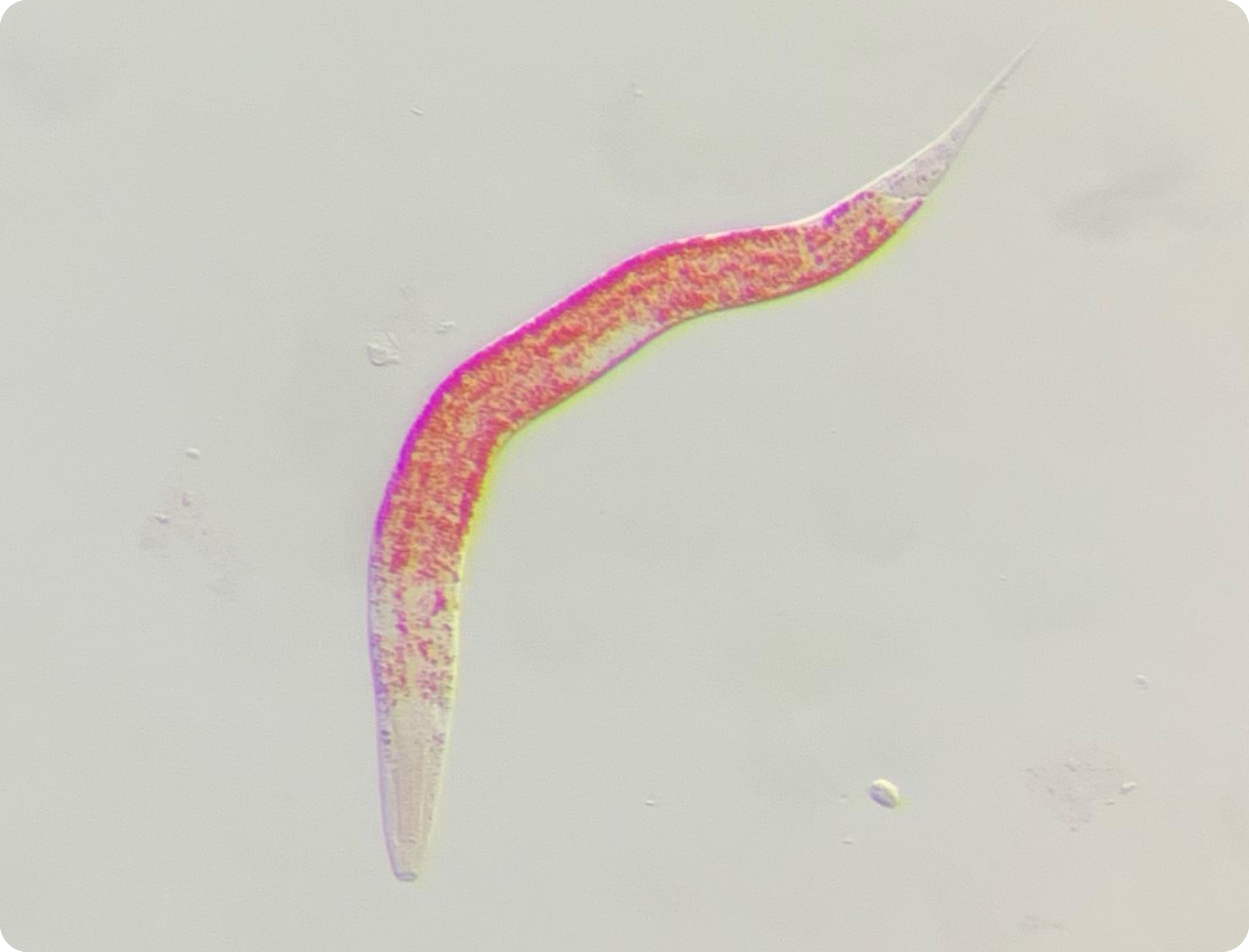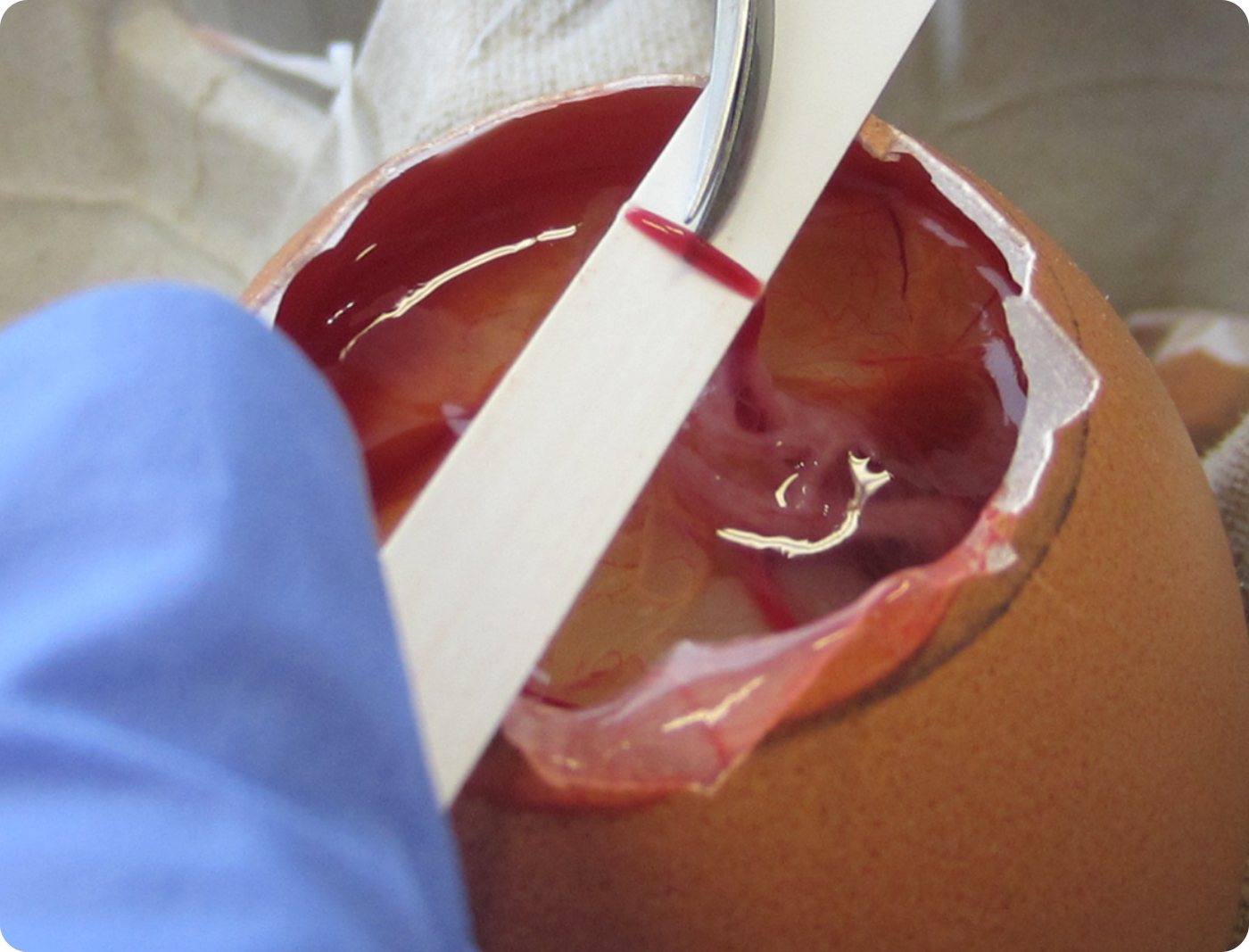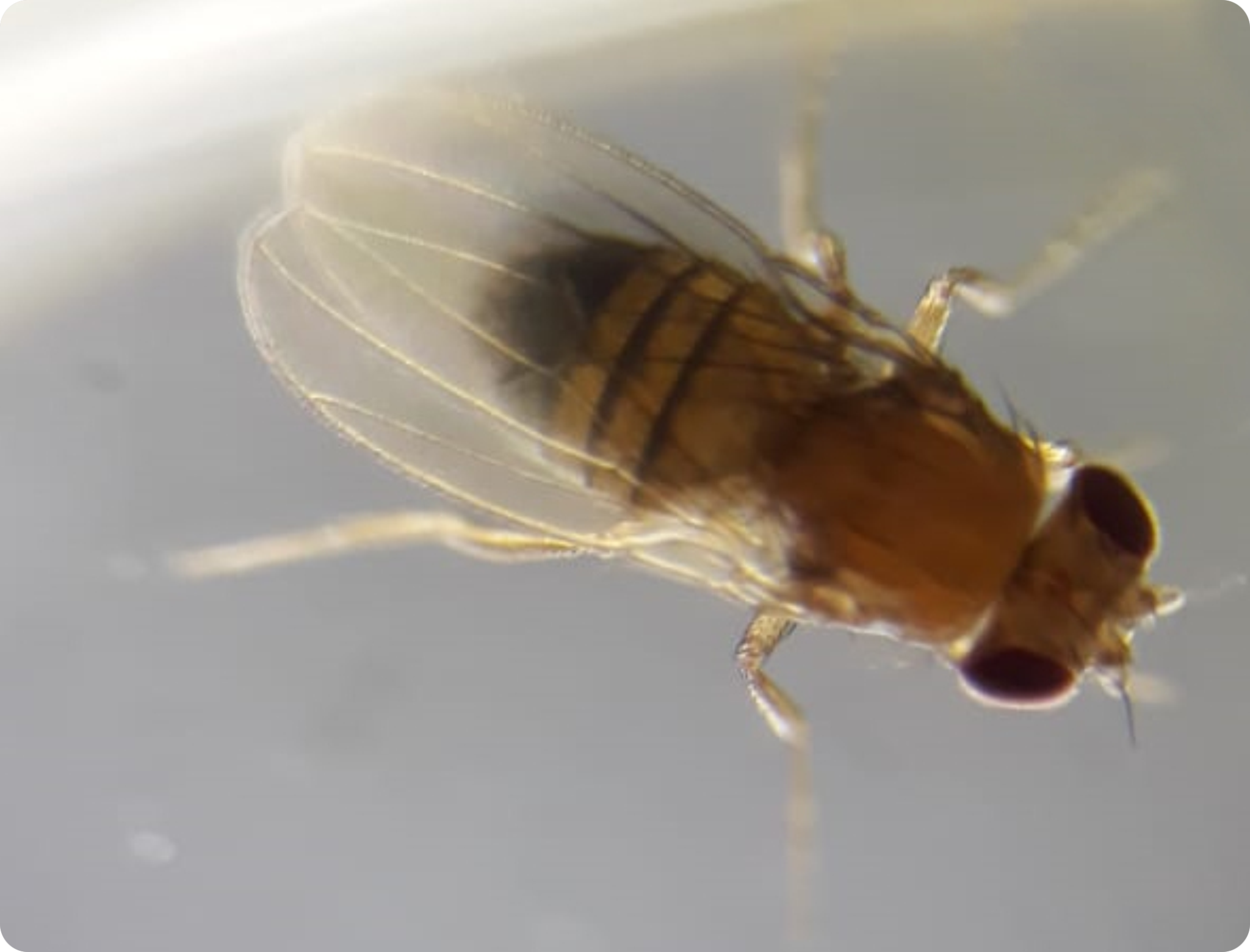in vivo Models
Model organism Caenorhabditis elegans
Bei Caenorhabditis elegans (C. elegans) is an approx. 1 mm large nematode, which is used in our research group as a sensitive and reliable in-vivo high-throughput system for the characterization of various substances and active ingredients. The worm has high sequence homologies to higher organisms and some main metabolic pathways are highly conserved. Thus, the holistic live animal model offers extensive possibilities for the detailed identification of regulatory mechanisms and the prediction of effects on higher organisms.
Technical data
Test system with high physiological relevance | live animal model | no animal testing | high sample throughput

HET-CAM
HET-CAM, also known as the hen's egg test, is a method for testing the mucosal tolerance of chemicals and their cytotoxicity. The HET-CAM can also be used to study blood sugar regulating substances. Insulin resistance and the failure of insulin-producing beta cells are the main problems of type 2 diabetes mellitus. As current drugs are associated with many side effects, secondary plant substances with insulin-mimetic properties are increasingly attracting the interest of researchers. With the HET-CAM, we have established a system to test these substances in-ovo. Chicken eggs are incubated for eleven days and treated with the substances to be tested. Blood is then taken from the chicken embryos and the blood sugar level is determined. This is a simple way of measuring the effect of a substance on blood glucose levels over time in a living organism. This system is also suitable for testing the toxicity of substances on the organism.
Technical data
Test system with high physiological relevance (in-ovo) | no pain sensation of the chicken embryo due to the shortened incubation period | no ethical review required | alternative to
controversial stimulation tests

Model organism Drosophila
Drosophila melanogaster (D. melanogaster), also known as fruit fly or vinegar fly, is an approximately 3 mm long fly from the family Drosophilidae. D. melanogaster is established in our group as an in vivo model organism to study intestinal functions (e.g. absorption, digestion, intestinal immune defense) and cognitive functions (e.g. memory and learning) in the context of phytogenic substances. The fully sequenced genome of D. melanogaster shows that approximately 60% of the genome is homologous to that of humans, making this species a valuable in vivo model for various nutritional studies. The relatively short lifespan of the fruit fly allows for lifelong complex studies of phytogenic compounds and drugs to observe the effects of tested drugs on longevity, fertility and genetic effects on the next generation of flies.
Technical data
Test system with high physiological relevance | living whole animal model | no animal testing (no ethical concerns/restrictions) | various disease model strains

I'll help you choose your study program.